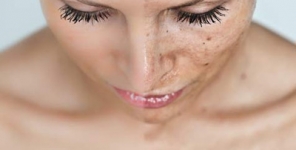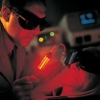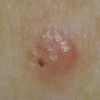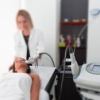Un confronto tra il laser Q-switched Nd:YAG in aggiunta alla fototermolisi frazionale da 1550 nm e la monoterapia Q-switched Nd:YAG, per il melasma facciale della pelle asiatica
 Il melasma è un comune disturbo della pigmentazione che pone una sostanziale sfida terapeutica. La terapia combinata potrebbe essere utile negli Asiatici dove predomina un tipo misto di melasma.
Il melasma è un comune disturbo della pigmentazione che pone una sostanziale sfida terapeutica. La terapia combinata potrebbe essere utile negli Asiatici dove predomina un tipo misto di melasma.
Obiettivo:
Abbiamo cercato di valutare l'efficacia e la sicurezza del trattamento con Q-switched Nd:YAG da 1064 nm (QSNY 1064) e del trattamento con fototermolisi frazionale erbio-dopato non ablativa (NFP) da 1550 nm per il melasma Asiatico.
Metodi:
Si è trattato di uno studio di metà faccia, nel quale sono stati trattati 26 pazienti con QSNY 1064 (dimensione dello spot 6 mm, fluenza 1.2-1.4 J/cm2) per 10 sedute ad intervalli di 2 settimane su tutto il viso, e con il NFP (modalità dinamica, energia dell'impulso 6-8 mJ/zona di trattamento microtermica (MTZ); densità totale di 300 MTZs/cm2) per cinque sedute ad intervalli di 4 settimane e su un solo lato del viso.
Sono state modificate le variabili di efficacia: l'Indice di Area e Severità del Melasma (mMASI), la valutazione globale del medico (PhGA), e la valutazione globale soggettiva del paziente (PGA). Attraverso la segnalazione degli eventi avversi, ne è stata valutata la sicurezza. Risultati: La percentuale di miglioramento soggettivo è stata praticamente identica per entrambi i lati.
L'mMASI ha corroborato la stima soggettiva dei pazienti, sia in termini di grado di miglioramento che di mancanza di differenza tra i lati trattati con QSNY 1064 + NFP e quelli trattati con QSNY 1064. Per entrambi i lati, non sono stati riportati gravi effetti collaterali.
Conclusioni:
I nostri risultati non supportano l'ipotesi che NFP fornisca un sostanziale beneficio nel trattamento del melasma se confrontato con il solo trattamento QSNY 1064.
Storia della pubblicazione:
Titolo: A split-face comparison of low-fluence Q-switched Nd: YAG laser plus 1550 nm fractional photothermolysis vs. Q- switched Nd: YAG monotherapy for facial melasma in Asian skin.
Rivista: J Cosmet Laser Ther. 2013 Apr 22.
Autori: Kim HS, Kim EK, Jung KE, Park YM, Kim HO, Lee JY.
Affiliazioni:Department of Dermatology, Seoul St. Mary's Hospital, The Catholic University of Korea , Seoul , Korea.
Abstract:
Background: Melasma is a common pigmentary disorder which poses substantial therapeutic challenge. Combined therapy may be beneficial in Asians, where mixed type melasma is dominant. Objective: We sought to assess the efficacy and safety of a 1064 nm Q-switched Nd: YAG (1064 QSNY) and a nonablative 1550 nm erbium- doped fractional photothermolysis (NFP) treatment in Asian melasma. Methods: This was a split face study, in which 26 patients were treated with the 1064 QSNY (6 mm spot size, 1.2-1.4 J/cm2 fluence) for 10 sessions at 2-week intervals to the entire face, and with the NFP (dynamic mode, pulse energy 6- 8 mJ/microthermal zone (MTZ); total density 300 MTZs/cm2) for five sessions at 4-week intervals to the experimental side of the face. Efficacy variables were modified Melasma Area and Severity Index (mMASI), the physician's global assessment (PhGA), and patient's subjective global assessment (PGA). Safety was evaluated through the reporting of adverse events. Results: The percentage of subjective improvement was virtually identical on both sides. The mMASI corroborated the patients' subjective estimate, both in terms of the degree of improvement and the lack of difference between the 1064 QSNY + NFP and the 1064 QSNY treated sides. No serious side effects were reported in either side. Conclusions: Our findings do not support the hypothesis of NFP providing a substantial benefit in treating the melasma when compared with the lone treatment of the 1064 QSNY.





